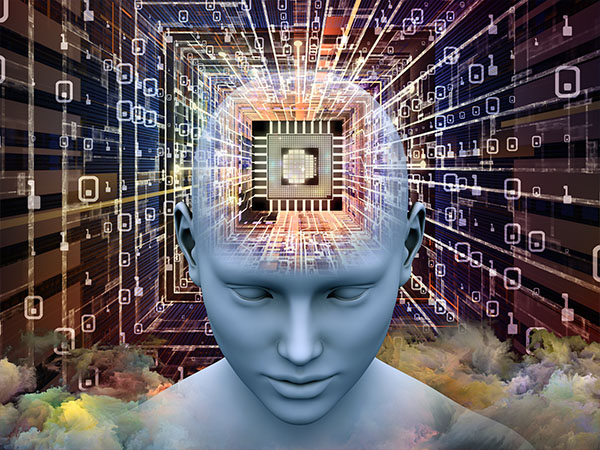Today, people typically consider a math book as a collection of concepts, equations, and math problems. However, there are almost no math problems in Euclid's Stoicheia, the world's first math book. Then why are modern day math books full of math problems?
Math is the study of discovering the secret of nature. Many Ancient Greek philosophers were outstanding mathematicians. The study of math is the process of discovering the designs and patterns in life forms within nature by observing it. You can get closer to finding out the secret of nature if you experience and learn about it. The proper way to study mathematics is to find out the secret of nature.
The world is changing rapidly, and children think differently from the past. The change of children, who are the consumers of education, requires changes in math education, as well. Math textbooks also need to be rewritten. We must return to the world of mathematics as the Ancient Greek philosophers thought of it. Keeping this in mind, we came up with thoughts and ideas for the new content of math education.
Creators of a consumer-centered education framework
In Ancient Greek learning environment, a teacher and a student sat across from each other, endlessly exchanging questions. As an education consumer, a Greek student could get answers from the teacher whenever, and however much the student wanted. This process of pouring countless amounts of time into the space of knowledge engendered the knowledge and cultural depth in Ancient Greece.
day, the emphasis on convenience and productivity resulted in the transition to supplier-focused education. We are living in the world where education-consumers can only get as much knowledge as the education supplier chooses to provide. This has resulted in the stereotypical rote-learning-based education, where "the teacher teaches, and the student follows and learns."

The ruling class has preselected the knowledge to teach to the subjugated class to maintain the order they desire. This is the education the suppliers prefer, as they fall within the boundaries of ethics or norms. The ruling class wished for subordinates that fit their tastes, and the subordinates that met the requirements were created. Supplier-centered education paradigm does not consider children's innate talents or their happiness. It prioritizes the benefit of the community in determining what the children should learn. This results in a society where its members are trapped within the vertical paradigm of centralization and bureaucratization, where little care is given to individuals' innate talents or the "seeds of creativity."
Looking back, Ancient Greek teachers, as the education suppliers, put their students first. However, there are no such teachers, knowledgeable in a wide range of fields including philosophy, science, mathematics, politics, and art.
Fortunately, consumer-centered education has become possible with the advancement of information and communications technology. IT revolution made available a whole new dimension of consumer-centered education service that goes beyond the educational service a student could get from a teacher in Ancient Greece. To provide consumer-centered education through IT, changes to content is required. We have created a framework that enables education to be focused on the consumers, not the suppliers.

Designers of innovative education method and educational community of a new paradigm
For the most stereotypical method of learning, the most important variable is books. People typically do not believe in education without books.
As the consumers of education, students seeking knowledge visit teachers for education. Of course, there also are cases where the teachers visit the students. Nonetheless, in the dynamic of teaching and learning, the focus is on the teachers. The supplier-centered education where teachers are more important cause a waste of money and time. It is not even the case that student satisfaction with this type of education is high. This is why people have begun seeking convenience in education.
Today, the digital era allows for education that does not necessarily require students to visit the teacher or for the teacher to visit the student. For example, you can access teachers online about a math problem if you have difficulties solving it through lectures on the internet. However, it soon became apparent that the online lectures are little more than classroom provided on digital devices.

Students of the supplier-centered education can only obtain information that the supplier wants to provide. They cannot ask questions about what they do not know. This leads to a frustrating learning experience.
The advent of the IT era opened up a world where the platforms dominate the contents. Education content can be no exception. A wide variety of education video content available online such as documentaries produced by the likes of BBC contained not only vivid images of nature but also the moving stories of people and society. Through the videos, students could indirectly experience and learn about nature, as well as understand people and society. The new era provided an opportunity for education consumers to enjoy the education they have dreamed of.
The world changes quickly. The DT era, where the contents dominate the platform, has begun,as opposed to the IT era where the platforms dominated the contents. The offline world moves into the online environment, and with the development of IoT, the data between people-to-people, people-to-objects, and object-to-object are increasing at an explosive rate. People can now easily access data, saved in cloud storages connected through the internet.
Amidst the flood of information in the DT era, people are desperately hoping for something to help find the information they need. Jack Ma, the CEO of Alibaba, defined the DT era as "The era where the business that knows how to use the customer data to satisfy each customer's demands would succeed."

We have carefully observed and studied the global platform. We are well aware of the unique conditions we are in. In response to the modern trend, we developed math education content using natural language, appropriate for setting a standard of global math education. The contents we have come up with open up an education platform of the new paradigm suitable for both the IT and the DT era. This is the innovative education product that everyone has been looking for.
We designed an education system and framework embodying a search program with a broad database where an artificial intelligence system allows for a virtual teacher in the book to guide the student.
We are opening up a world where the education that the consumers have been searching for can be realized.







